A recent report by Meticulous Research® reveals that the direct-to-consumer (DTC) pet food market is set to grow significantly, reaching $13.06 billion by 2031.
The market is expected to expand at a compound annual growth rate (CAGR) of 19.8% from 2024 to 2031.
Direct-to-consumer sales involve selling products directly to customers, bypassing traditional third-party retailers and intermediaries. The DTC pet food market has seen rapid growth due to the increasing adoption of digital channels, driven by higher smartphone usage and internet penetration. This shift to online sales is further propelled by busy lifestyles, user-friendly websites and apps, and easy product accessibility.
Key Growth Drivers
Several factors contribute to the market’s growth, including a rising pet population and increased spending on pet food. The growing incidences of zoonotic diseases and the demand for premium pet food products are also significant drivers. Additionally, the emergence of new DTC pet food brands and the rise of e-commerce play crucial roles in this growth. The use of cannabis in pet food is expected to create new opportunities for market players.
However, the market faces challenges such as quality issues and product recalls, which can restrain growth. Trends such as the demand for customised pet food and the humanisation of pets are also shaping the market dynamics.
Market Segmentation Insights
By Type
The DTC pet food market is segmented into meal, treats, and supplements. In 2024, the meal segment is anticipated to hold the largest market share at 75.9%. This dominance is attributed to the increasing awareness of pet health, higher spending on premium meals, and the growing demand for customised meals.
By Pet Type
The market is divided into dogs, cats, and other pets. The dogs segment is projected to account for the largest share at 75.1% in 2024. This significant share is due to the rising number of dog adoptions, increasing demand for high-quality dog food products, and the humanisation of dogs.
The market is further segmented by health conditions, including nutrition, digestive health, heart health, allergies, dental health, skin problems, stress, joint health, and others. The nutritional conditions segment is expected to hold the largest share at 25.5% in 2024. This segment’s growth is driven by the expansion of premium pet food brands and increased awareness among pet owners about their pets’ health.
The digestive health segment is anticipated to witness the highest growth rate of 23.9% during the forecast period. This growth is driven by customised nutritional formulations aimed at preventing digestive issues and the introduction of prebiotics and probiotics in pet diets.
Distribution Channels and Geographic Insights
The market is split into online and offline channels. In 2024, the online segment is expected to dominate, holding a 91.6% share of the market. This preference is due to factors such as personalisation options, consumer convenience, better discounts compared to offline stores, and a more extensive product selection experience.
Geographically, North America is expected to account for the largest market share at 47.9% in 2024. This dominance is due to several factors, including a growing number of millennial pet owners, a wide range of customised pet food options, a focus on pet health and diets, and the presence of major market players in the region.
The direct-to-consumer pet food market is poised for significant growth over the next decade. Factors such as the rising pet population, increased spending on pet food, and the shift to online sales are driving this expansion. Despite challenges, the market presents ample opportunities for innovation and growth, particularly in areas like customised pet food and the use of cannabis in pet diets.








